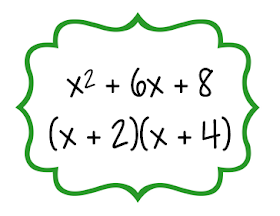Hello! I'm spreading holiday cheer with a few of my math friends. Make sure to keep blog-hopping to find more giveaways!
My Favorite Holiday Activity
My Favorite Math Activity
The favorite of me and my students have to be my coloring activities. I find coloring to be so relaxing and soothing (and those are two words students don't usually associate with math!). In all my coloring activities, students get to pick their own colors., which means they do not all look the same. I also love self-checking activities, so that students don't practice incorrectly, and the coloring activities have an answer bank included, so students know when to ask for help. The opportunity to engage the right-brain is so important in math class, and I love giving the students a chance to show their creativity. Plus, with the holiday break so close, a few minutes coloring could be just the hook you need to get the kids to do their work and stop asking, "Can we just have a free day?"
My Favorite Teacher Tool
My go-to daily teacher must-have is a nice strong cup of coffee. I love walking around helping students with their work as I sip it during 1st period. I usually brew my own at home and love to add some peppermint-flavored creamer this time of year. Only once in 10 years have I spilled any on a students' work and it was this year in her interactive notebook, while I was showing her work under the document camera (oops!). Now every time I ask to put her work on the document camera, she says, "Only if you make sure your mug is all the way closed first" 😁
Giveaway
So now it's time for your chance to win a present in a GIVEAWAY! I have a $15 Starbucks gift card that I will send to you via snail mail, and my Algebra Coloring Activities Bundle that you can use to keep your little elves engaged all year!
Now it's time to hop over to Smith Curriculum and Consulting's blog to enter another giveaway!






















































